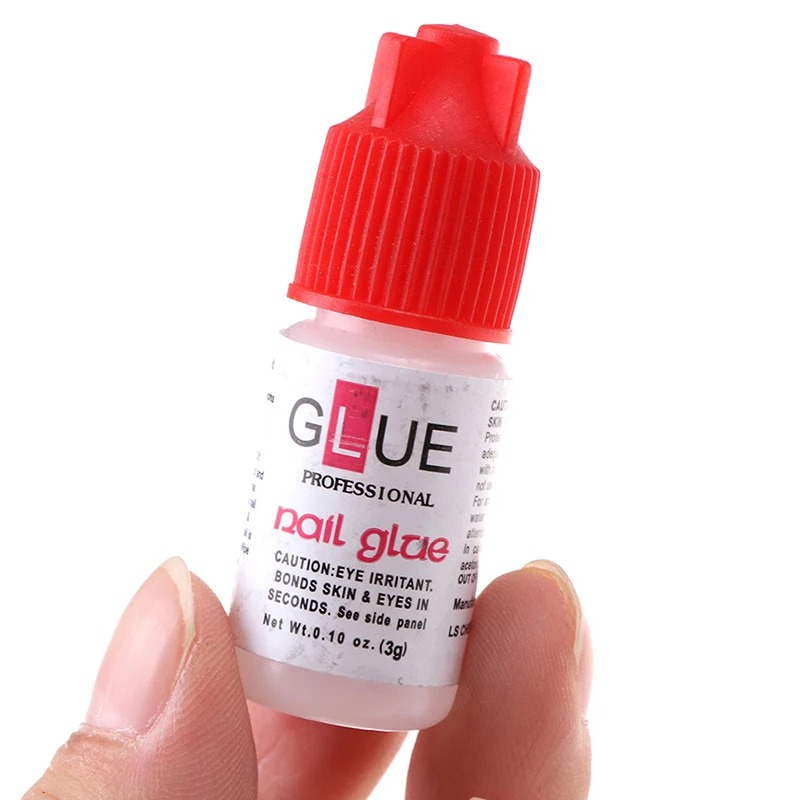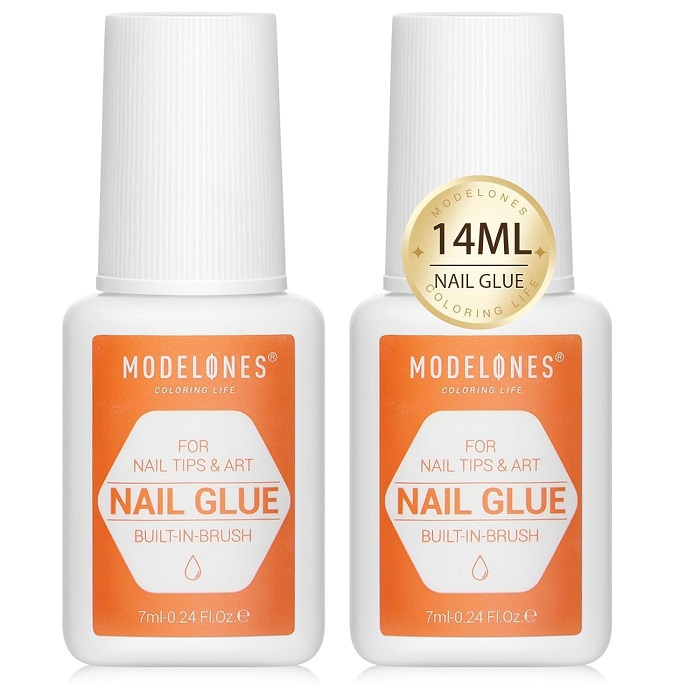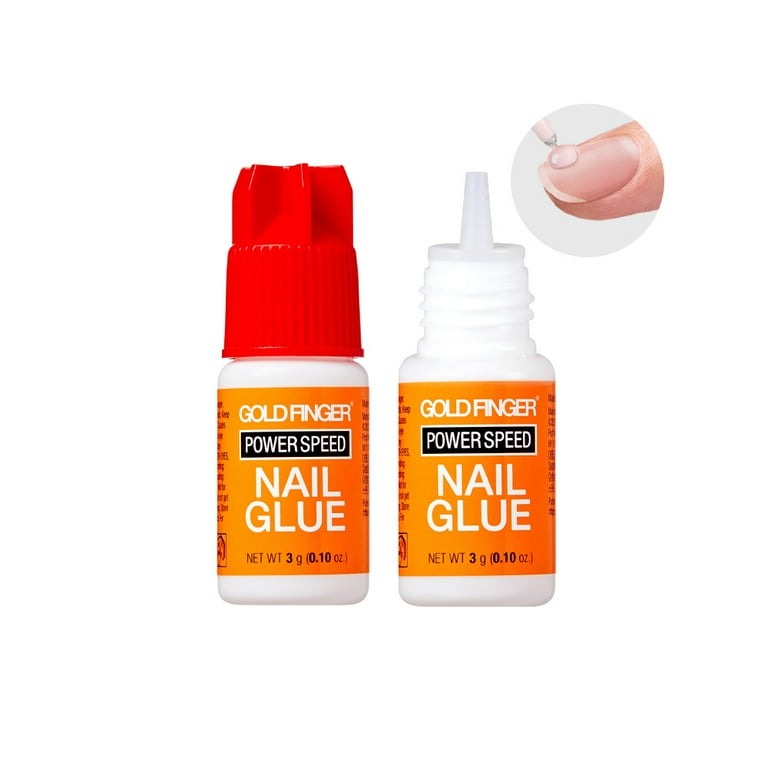Introduction to Nail Glue Technology
The use of nail glue marks a significant advancement in personal nail care and fashion. This adhesive is designed for securing artificial nails, nail art decorations, and, in some cases, mending natural nails. Nail glue technology has evolved to offer not only stronger, but also safer options for consumers and professionals alike.
The base of most nail glues is cyanoacrylate, a strong and quickly bonding adhesive familiar to many as ‘super glue’. Over the years, the formulation has been refined to reduce fumes, minimize allergic reactions, and enhance flexibility. This ensures a more comfortable wear, a more natural nail look, and a less damaging removal process.
Modern nail glue formulations cater to various needs. They can be fast-setting for quick applications, or designed with a slower setting time to allow for adjustments. Some nail glues also come with added benefits such as vitamins and minerals to nourish the nail bed or anti-fungal properties to prevent infections.
As we explore the world of nail glue, we’ll find out how diverse this market has become. We’ll look at the types of nail glues available, their advancements, how they’re influencing nail art trends, and share guidance on choosing and using them effectively. Knowing the ins and outs of nail glue technology is essential for anyone looking to achieve a flawless nail finish that’s both durable and stylish.
Types of Nail Glues on the Market

When looking for nail glue, you will find a variety of types available. Each serves different needs and comes with its unique set of features. Below are the common types of nail glues you may encounter:
- Brush-on Nail Glue: This type comes with a brush applicator. It allows for precise and even application. It’s ideal for applying nail tips and small decorations.
- Tube Nail Glue: You can find nail glue in tube form. It’s commonly used for glue-on nails and repairing cracks or splits. The tube packaging lets you control the amount you use.
- Gel Nail Glue: Gel nail glue has a thicker consistency. It works well for securing heavier or larger nail art pieces. It also tends to set more slowly, giving you time to adjust before it dries.
- Pen Nail Glue: Pen-style applicators are portable and great for touch-ups. They offer a more targeted application, which is perfect for quick fixes.
- Anti-fungal Nail Glue: Some nail glues come with anti-fungal agents. They help prevent nail infections, which is a great feature if you have had issues with fungus before.
- Vitamin-infused Nail Glue: These nail glues contain vitamins and minerals. They aim to nourish your nails while they hold your nail art in place.
Remember that while shopping for nail glue, consider the task at hand. Do you need a fast-setting glue, or do you prefer one that allows for adjustments? Are you concerned about nourishment or protecting against fungal infections? Answering these questions will help you choose the right nail glue for your needs.
Advancements in Nail Glue Formulations
Nail glue has made impressive strides in formulation, responding to consumer demands for higher quality and safety. The latest advancements in its technology focus on enhancing bond strength without compromising flexibility. This is crucial for ensuring that nail enhancements move with the natural nail, reducing the risk of breakage. Innovations include the adoption of more refined cyanoacrylate bases. These new formulas aim to reduce skin irritation and the risk of allergic reactions.
Developers now infuse it with nourishing elements such as vitamins and minerals. This not only improves the health of the natural nail but also encourages nail growth. Additionally, nail glue products are increasingly incorporating anti-fungal agents. These are important in preventing infections, especially for users prone to nail fungus problems.
The delivery systems of nail glue have also seen improvements. Manufacturers are designing brush-on and pen-style applicators for precise and controlled application. Gel nail glues now have improved formulations that allow for a smoother application and better staying power. The tube nail glues offer enhanced sealing capabilities to prevent the glue from drying out, ensuring longer shelf life.
Moreover, with a growing eco-friendly movement, some brands are working on biodegradable and non-toxic formulations. Although still in the early stages, these developments promise to offer a safer environmental footprint and reduce the potential harm to users.
In summary, the advancements in it formulations are tailored to meet a broad range of needs, from the professional salon to the home user. This progress supports long-lasting, stronger bonds while prioritizing the health of the natural nail and the safety of the user.
Comparing Traditional and Modern Nail Glues

When we consider nail adhesive options, a comparison between traditional and modern nail glues reveals significant differences. Traditional nail glues were often simple formulations of cyanoacrylate. They provided a basic level of adhesion but lacked secondary benefits. Furthermore, they had a reputation for being harsh on natural nails and causing issues during the removal process.
Modern nail glues, on the other hand, have transformed the nail care landscape. Here’s how they stack up against their traditional counterparts:
- Strength and Flexibility: Modern glues offer a potent combination of strength and flexibility. This means they bond strongly without making the nail feel overly rigid.
- Reduced Irritation: Advanced formulas reduce skin irritation and allergic reactions. Nail enthusiasts can now enjoy their nail art without fear of adverse effects.
- Nail Health: With added vitamins and minerals, modern nail glues nourish the natural nail. This advances overall nail health and promotes growth.
- Anti-fungal Properties: Many modern products include anti-fungal agents. This is crucial for preventing infections, especially for those with a history of nail fungus.
- Innovative Applicators: From brush-ons to pens, modern applicators ensure precise and clean application. This innovation has made DIY nail art more accessible and less messy.
- Eco-friendly Options: There is a growing selection of biodegradable and non-toxic nail glues. These offer a safer environmental impact and minimize harm to users.
Each of these advancements addresses specific drawbacks found in traditional nail glues. The aim is to provide a more pleasant and safe nail art experience. When searching for nail glue, it’s clear that modern formulations deliver performance and health advantages that go beyond simply sticking artificial nails. They allow for a custom nail art experience tailored to individual needs and concerns.
The Role of Nail Glue in Nail Art Trends
Nail glue is pivotal in the evolution of nail art trends. It acts as the fundamental binding agent that allows both amateurs and professionals to experiment with various designs. The rise of social media platforms like Instagram and Pinterest has fueled an explosion in nail art popularity. Users share images of intricate designs that would be impossible without reliable nail glues.
Durability and Design Complexity
Modern nail glues provide the durability needed for complex nail designs. Gone are the days when artificial nails would pop off easily. Today’s they ensure that even the most elaborate 3D designs and embellishments stay in place. Increased durability also means designs last longer, so nail artists can push the boundaries of their creativity.
Encouraging Nail Art Innovation
As nail glue technology advances, it leads to innovations within the nail art community. With it now infused with vitamins and anti-fungal properties, consumers are more confident trying new things. This assurance has given rise to a diverse range of styles, from minimalist looks to avant-garde nail sculptures.
Influencing Trends and Consumer Choices
Nail glue is influencing consumer choices, as it enhances the wearability of nail art. When users know their nail glue is strong and healthy for their nails, they are more likely to opt for artificial nails. This increased demand drives nail art trends, with consumers seeking new and innovative ways to express themselves through their nails.
In conclusion, it is not just a practical tool but a catalyst for change in the nail art industry. Its improvements over time have expanded the horizons of what’s possible, making today’s nail art more exciting and personalized than ever before.
How to Choose the Right Nail Glue

Choosing the right nail glue is crucial for achieving the desired outcome with your nail art. It can be overwhelming with so many options available. To simplify the process, here are key factors to consider:
- Assess Your Needs: Think about what you’ll use the glue for. For applying nail tips or small decorations, a brush-on nail glue might be best. For heavier embellishments, consider gel nail glue.
- Check the Setting Time: If you are new to nail art, choose a glue with a slower setting time. This allows for readjustment. Experts may prefer fast-setting glues for efficiency.
- Consider Nail Health: Look for vitamin-infused nail glues if nourishment is a priority. Anti-fungal nail glues are available too, to prevent possible infections.
- Applicator Type: This depends on your comfort and the precision needed. Options include tube, brush, pen, and gel applicators.
- Safety Measures: Opt for it with fewer fumes and non-toxic ingredients if you have sensitive skin or allergies.
- Brand Reputation: Do some research or ask for recommendations. Established brands often offer higher quality glues.
Remember to use it in a well-ventilated area and follow the manufacturer’s instructions. By considering these points, you’ll find a glue that not only holds your nail art effectively but also cares for your natural nails.
Tips for Applying and Removing Nail Glue
Proper application and removal of nail glue are key for lasting, safe nail art. Here are easy-to-follow tips:
Applying Nail Glue
- Clean Nails First: Make sure your nails are oil-free and dry. This helps the glue bond better.
- Apply Thinly: A thin layer of glue is enough. Too much can cause a mess and weaken the bond.
- Press Firmly: After applying the glue, press the artificial nail or decoration firmly against your natural nail for a few seconds.
- Dry Properly: Wait for the glue to set completely before you touch or file your nails.
Removing Nail Glue
- Soak in Acetone: Place your nails in acetone for a few minutes. This helps to dissolve the glue.
- Gentle Prying: Use a wooden stick or cuticle pusher to gently lift the edges of artificial nails after soaking.
- Moisturize After: Acetone can dry out your nails. Use cuticle oil or lotion after removing the glue.
- Avoid Force: Never rip or pull at your artificial nails. This can damage your natural nails.
By following these tips, you can ensure a smooth application and removal experience while keeping your natural nails healthy.
The Future of Nail Glue Developments
As we look ahead, the future of nail glue shows great promise. Research and innovation are pointing towards even more advanced products that will continue to revolutionize nail care and nail art. Here’s what we might expect in it developments:
- Enhanced Safety Profiles: Future nail glues may eliminate toxic ingredients altogether, focusing on safety without compromising strength.
- Eco-friendly Ingredients: Expect to see more bio-based adhesives as the industry moves towards sustainable practices.
- Improved Bonding Technology: Scientists are working on new adhesive formulas that provide a longer-lasting bond while being easier to remove.
- Nail Repair Features: Upcoming it might also help repair damaged nails with enhanced healing properties.
- Customization and Personalization: We could see glues tailored to individual nail types and preferences, offering a personalized nail care experience.
- Smart Formulations: Imagine it that change properties based on nail conditions, such as moisture level, for optimal adhesion.
The goal of these future advancements is clear: to deliver products that are not only more convenient and effective but also healthier for users and the environment. The ongoing research in nail glue technology ensures that the future is bright, with innovations that will keep pushing the boundaries of what’s possible in nail art and care.